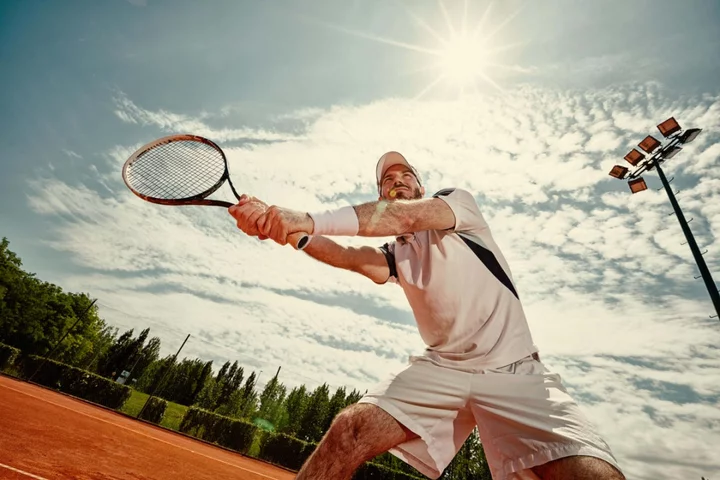
How tennis could be harming your body – and why it does you good
With Wimbledon underway and Nick Kyrgios already out due to injury, is tennis actually any good for you? Every tournament brings fresh injuries into the public eye, but the sport’s praises are often sung by fitness fans all over the world. So, how does it weigh up health and safety-wise? Is it worth investing some time in the sport if you enjoy Wimbledon? Tennis elbow The most common injury in tennis is tennis elbow, says Lucy Macdonald, physiotherapist at Octopus Clinic, and it’s something which has affected the likes of Andy Murray and Venus Williams. “Tennis elbow is the generic term for pain in the elbow, normally where irritation of the tendon runs over the elbow.,” she says. “It is often caused by a sudden overload on a tendon, in a way it is not used to, and it cannot cope with the forces that are on it. Treating it involves modifying what you are doing. “It can also be caused by other racket sports, and even things like breastfeeding a baby or cutting hedges and gardening,” she explains. But, it isn’t the end of tennis dreams. You can treat it. “Do not completely rest, modify the load going through the elbow, reduce the frequency and longevity of playing tennis, but things like physical support and tape can also help. “Changing your technique to take pressure off the tendon can help,” Macdonald explains. “The long-term treatment is to gradually build up the resilience of the tendon – a top spin stroke adds the most pressure – and alongside that, use static contractions – exercises that are just contracting the muscle, holding it and then relaxing.” Wrist injuries Kyrgios has pulled out of Wimbledon already, due to a wrist injury. “People may get wrist injuries if they fall and fracture the wrist. Or if they get a repetitive strain injury – if you use your wrist a lot in terms of the strokes you use with a lot of topspin – you can get some overuse and cause a flare up,” says Macdonald. Ankles and knees “Being on a slippery court, it can be easy to go over on your ankle,” she continues. “It happens in a lot of sports, if you’re running for a ball or trying to change direction. “You might get some knee problems, as they take such a hit generally with any propulsive sport – you get wear and tear on the knees, and sudden twists could impact your medial meniscus. Strength training is the best thing for that.” The benefits Should you be worried about all these injuries if you want to start playing, though? “The main cause of injuries in tennis is the sporadic nature people play it. If they suddenly go and play once every few months, the body is not used to the movements required in tennis, ” Macdonald notes.“You may suddenly run across the court and strain your calf or rupture your Achilles, because you haven’t run in months. “If you play it regularly and are consistent with the amount you play, it can be really beneficial,” she says.Any exercise is good, but the social aspect of tennis is hugely motivating, if you’re meeting up with three friends to play tennis, you have to show up – it gets you exercising regularly if you do it consistently. Tennis is beneficial for “increasing your heart and breathing rate, which is really good for your cardio and respiratory system. It keeps the range of motion in your shoulders, improves your balance with direction changes, and reduces your risk of falling,” says Macdonald. So, don’t let the risk of injury put you off. “There are so many positives that outweigh the negatives. Exercise, in general, extends your life span, and every illness out there is reduced by doing exercise. Even though it may have some impact on our musculoskeletal system, it is overwhelmingly positive for your mental and physical health.”
2023-07-04 19:55
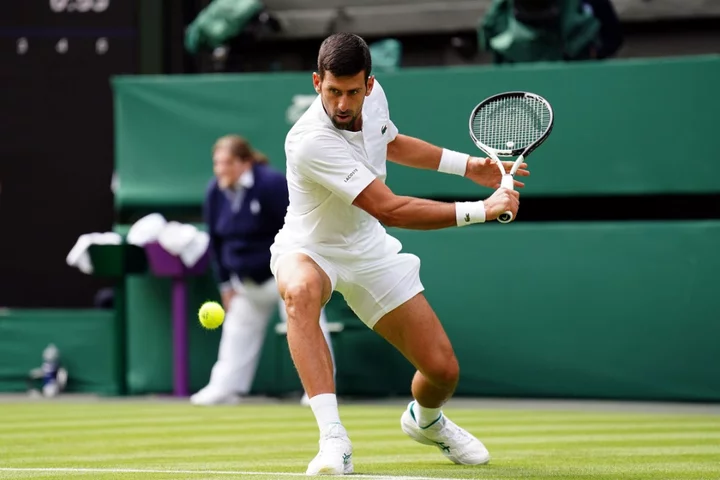
This is how Novak Djokovic is preparing to win Wimbledon
Tennis won Novak Djokovic over when he was just four years old. Since then, the Serbian professional tennis player established himself as a reigning men’s champion. In July 2006, he won his first Association of Tennis Professionals (ATP) event, and reached the semi-finals at Wimbledon and the French Open a year later. The 36-year-old also advanced to the finals of the US Open in 2007, but lost in straight sets to the former Swiss professional tennis player Roger Federer. He managed to win his first Grand Slam tournament at the Australian Open and was awarded a bronze medal at the 2008 Beijing Olympics. Though Djokovic’s performance has plateaued at some points, his hot streak has continued over the last 16 years. He claimed his 21st Grand Slam championship after winning Wimbledon in 2022 and gained his 10th title at the Australian Open, crowning both him and Rafael Nadal with the most Grand Slam men’s singles championships. With the 2023 Wimbledon Championships in full swing until July 16, how will Djokovic prepare himself both mentally and physically to win? Diet Djokovic starts his day with raw celery juice — which has anti-inflammatory properties – and sometimes drinks it before, during and after matches. Celery is about 90% water, so it’s great for hydration first thing in the day, especially when you don’t feel like chugging down a glass of water. On other occasions, he drinks the green goddess smoothie, “which is a load of green things chucked in and blended. In the food industry, you can get green goddess dressings, sauces and juices, which all have kale, spinach, peas, mint, cucumber, apple and spirulina powder all blended into one”, says celebrity private chef Ethan Russell. And for breakfast, Djokovic would normally eat a power bowl — it’s got a lot of healthy fats, grains, and fruit in it — or have it as a snack before exercising. The clear number one rule is being gluten and dairy-free. “It’s a choice many athletes make, especially if they want to feel and perform their best. Gluten and dairy can cause irritation,” Russell says. There are so many different dairy and protein alternatives at the moment, such as coconut, soy and almond. “The bowl has different types of grains, gluten-free granola — with pumpkin seeds and goji berries — then a low sugar style muesli,” he adds.“If you are an athlete and trying to keep your sugar low, you can opt for dairy-free yoghurt and manuka honey, which is quite expensive and very sought after, with its anti-inflammatory properties. People use it in food and skincare, making it a super food. The bowl is then topped with blueberries and strawberries, packed with natural sugars.” Warming-up Djokovic would usually start warming-up with his physiotherapist, then move onto to mobilisation and movement exercises, to minimise the risk of major injuries. Warm-ups can be anything from the running man, squat reaches to the sky and lunge rotations, all of which encourage great blood circulation. A match can last one and a half hours, and there are so many things to manage on match days, according to Mark Taylor, who coaches British tennis player Ryan Peniston and also works at the Junior Tennis Coaching academy. “They play all year round and often under immense pressure. It’s why I also work with a sports psychologist,” he says. Mindfulness Djokovic is heavily into mindfulness, and might begin his day with silent meditating — especially if he’s got an important game to focus on — in a grounded way, to promote mental clarity, calm focus and energy. “Most of us find it difficult to sit still,” says Loren Peta, yoga teacher and personal trainer. “But gentle movement and box breathing — where you draw a box with your mind’s eye to help you stay present — is a great way to transition from a state of doing to state of being.” Whilst in conversation with former Spanish tennis player Alex Corretja at the The House of ASCIS event last Friday, Djokovic opened up about his mental health and wellbeing. “If we are talking about mental strength and preparation, and how it affects performance, I feel like half of the work is already done before you step out on to the court – also known as the battlefield,” Djokovic said. “It’s why I try to only peak at the biggest tournaments and take more time than I used to, to get my mind and body into perfect harmony. My body is responding differently than it was 10 years ago, so I have to be more specific with my preparation, work, training and recovery. I believe in a holistic approach to this sport, and everything else in life. “It’s about everything you do, eat, the relationships around you, how you perceive yourself, the traumas and emotions that are suppressed in you. I know for me, if I suppress something, it will always surface on the court. The more you put these things aside, the bigger the monster will become. “If you fail to prepare, it’s going to be a difficult mountain to climb during the match. Tennis isn’t a sprint, it’s a marathon as well.” Getting the right footwear There are certain things that are important to keep in your kit. But for Djokovic, his racket and shoes are the two most important items for every tennis player, especially at his level. Good shoes adapt to the way a tennis player moves their feet, to ensure the right support and exact comfort can be added, if required. For example, improved extra heel cushioning and ankle support. “The details [are important],” said Djokovic. “Every single thing matters. How you move, how you feel with your racket and shoes. You need to be comfortable with what you are wearing, because it’s going to help you perform and move better. “I probably move differently to most of the guys out there – even on grass, I slide. [So I need] really flexible shoes that allow me to stop when I need to stop, and change directions when I need to change directions. It can’t be too light or too heavy.” Read More Charity boss speaks out over ‘traumatic’ encounter with royal aide Ukraine war’s heaviest fight rages in east - follow live Money-saving ways to garden on a budget 8 budget-friendly ways to juggle childcare and work during holidays Dior’s couture show was the epitome of quiet luxury
2023-07-04 16:57
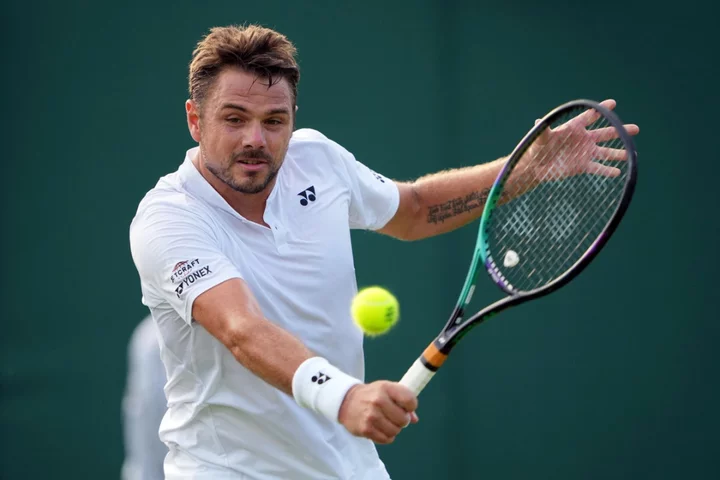
Stan Wawrinka on setbacks, preparing for Wimbledon and friendship with Roger Federer
With Wimbledon starting next week, Stan Wawrinka is excited about returning to London’s iconic championships. “It’s really a different tournament with the history, also the fact that we play on grass courts. The courts are amazing, the atmosphere is great,” he says on a video call from the All England Lawn Tennis and Croquet Club. Today, the Swiss player is taking a break from his gruelling training schedule to visit SW19 as part of his long-running partnership with Evian. “It’s always special for us players to go practise or to play matches on small courts as well, because you have so many fans coming and the atmosphere is always going to be special,” he continues, saying his most memorable Wimbledon match was against a certain Swiss opponent. “I played one quarter final against Roger [Federer] on Centre Court – it’s always special to play Roger, to play him here was something really nice.” Ahead of the famous championships, the 38-year-old has been training in Monaco, before heading back to London this week. So, how does the three-time Grand Slam winner balance the physical and psychological aspects of preparing for high-profile events? “It’s all a big puzzle,” says Wawrinka, who was born near Lausanne to a German father and Swiss mother. “As a tennis player, you have the fitness side and you have the mental part – you have everything that you need to do to be ready.” Plus, there’s the challenge of having to deal with defeats: “Tennis is a tough sport in the way that you end up almost every week losing. You need to accept [that you will] lose and try to learn and take something positive from it.” How does the former world number three cope with not winning? “I try to refocus on myself, try to also think about everything I’ve been doing in practice… you can lose against a better player. If you know you’re doing the right things, then you can only be positive about it.” Stan the Man (as he’s known to fans) isn’t fazed by comparisons to Federer – whom he’s beaten on just three of the 26 times they’ve competed on court. “I always look for the positive of the situation and I’ve been lucky enough that when I arrived [on the circuit] I was a little bit younger than him – he was already at the top,” says Wawrinka, who is three years younger than his record-breaking countryman. “For me, it was a chance to have Roger in the same country… I had the chance to practise with him and he became a friend.” The pair were victorious at the Davis Cup in 2014 and at the Beijing Olympics in 2008, taking gold in the men’s doubles. “The Olympics are something that any athlete in any sport dreams about, to play individually, but [playing] doubles and to feel like a team it was super special,” Wawrinka recalls. How does training for doubles matches compare to singles? “It’s more the mental part. You need to know your partner, talk with him a lot about the tactics, but more about what’s going to happen. “Communication is really important on the court, but also off the court. For us, it was quite easy to play together because we are such close friends.” Seen as a late bloomer in terms of tennis, Wawrinka admits it was a struggle waiting to achieve his inaugural Grand Slam title at the Australian Open in 2014. “For me, the most challenging part was to find the confidence in myself and in my game. I only won my first Grand Slam at 29 years old, it took me a while to really find that confidence.” Suffering setbacks throughout his career due to knee, elbow and foot injuries, Wawrinka’s ranking has yo-yoed in the past few years, but he returned to the world top 100 in February. “It was tough to be back at 37 years old after more than a year out for another two surgeries,” he says. “It was not easy, but for me, it’s about the passion. I love what I’m doing, I enjoy the process… it was, of course, so special to be back again in the top 100.” Off the court, he unwinds by spending time with daughter Alexia, 13, whom he shares with ex-wife Ilham Vuilloud, a Swiss TV presenter: “I’m traveling a lot so I don’t have that much time to be with her, so I’m trying to enjoy that.” Having grown up on his parents’ biodynamic farm, the tennis champ has inherited the green-fingered gene, growing fruit and veg in his garden back home in Switzerland. “I have tomatoes, courgettes, I have many fruits. I think it’s just different when you have your own garden than when you go buy it at the shop directly.” Reducing his impact on the environment is also a priority for the Evian global brand ambassador, which is why he’s pleased the water brand is introducing refillable bottles for players at Wimbledon for the first time this year. “It’s important for us, the players, [because] we’re traveling a lot – this new bottle is going to be great,” Wawrinka says. Two years away from 40 and with 16 career titles and 550 career wins under his belt, he’s not planning on hanging up his racket any time soon. “I’m still hoping to play a few more years on tour. It’s, of course, not easy, but I’m passionate about it. I want to enjoy it as much as I can,” Wawrinka says. “The time I will stop there will be no way back, so I need to really push and try to be as good as I can.” Evian, official water of the Championships, together with Wimbledon have launched a new refillable solution to hydrate players on court during this year’s tournament. Discover more at www.evian.com. Read More Charity boss speaks out over ‘traumatic’ encounter with royal aide Ukraine war’s heaviest fight rages in east - follow live Hacks for saving money on school uniforms King Charles and Queen Camilla surprise spa guests in bathrobes at eco-village Nearly 1.5m 18 and under referred for mental health support in 2022 – charity
2023-06-28 16:28
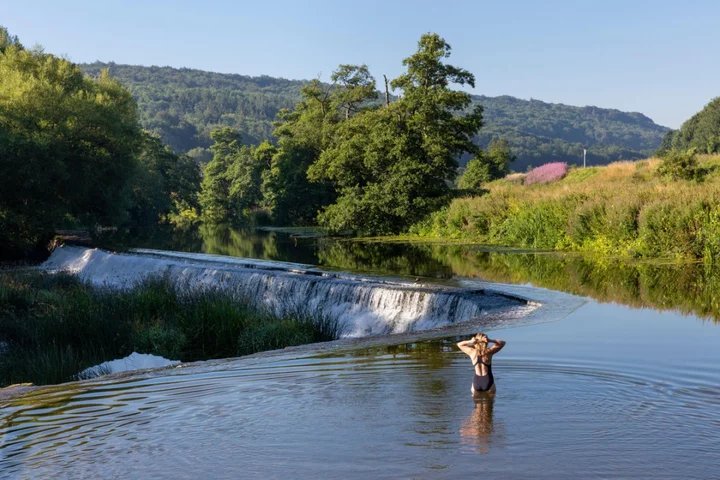
Wild swimming: When is it safe to go in?
When warmer weather arrives, many of us feel the urge to cool off with a refreshing dip at the nearest pool, pond or beach. A paddle is a pleasant way to beat the heat, it can boost your health too. “The benefits of swimming and dipping in open water are well documented,” says Lee Heard, charity director at Royal Life Saving Society UK. “Not only does being in or on open water allow new adventure, it also has documented benefits for both physical and mental wellbeing.” Research from Next found that 33% of people would look to wild swimming to find relief from muscle aches and pains, while 28% of those facing stress see it as a remedy. “Many of us only swim outdoors during the summer season,” says Ella Foote, founder of The Dip Advisor and author of How to Wild Swim: What to Know Before Taking the Plunge. But just because the sun is out doesn’t mean wild swimming is less dangerous, she says: “Learning to swim at some point in your life isn’t enough and being a fit, healthy person on dry land isn’t the same as being water fit.” There were 226 deaths in the UK from accidental drownings in 2022, according to the RNLI. Heard says: “The basic principles of open water safety, combined with knowledge and understanding of the hazards, can increase the enjoyment of open water and significantly reduce the number of incidents that occur each year.” These are the safety considerations to take into account before deciding whether to wade in… Look for lifeguards “There are a great number of open-water sites which are lifeguarded and we would urge people to go to lifeguarded venues if they are looking to take part in open water swimming,” says Heard. Use the RNLI website to find your nearest lifeguarded beach. “Lifeguards are trained professionals who can ensure your safety whilst out on the water and provide assistance should you need it,” Heard continues. “There are also a number of organised events around the country which have lifeguards on duty, so we urge people to attend those events.” Check the conditions If you’re swimming somewhere without a lifeguard, you must be aware of the potential risks.”If swimmers are aware of the potential risks and dangers, then this enables them to do a risk assessment before entering the water,” says Heard. Risks to consider include, he says: “The depth of the water – this changes and is unpredictable; underwater objects and hazards may not be visible; strong currents can rapidly sweep people away; and uneven banks and river beds.” “The weather is more changeable in coastal areas; wind can make a huge difference in the sea and how it behaves,” says Foote, who recommends checking the Tide Times or Surfline websites and following RNLI advice on rip currents. “If you plan a river swim it is worth remembering that water travels faster when a river is shallow, narrow or after spells of heavy rain,” she adds. Know your limits “Can you tread water while keeping your head above the water? Can you float on your back? Could you swim 25 meters without stopping?” asks Foote. “These are the very basic skills for keeping yourself safe in open water and if you are unsure – don’t get in.” While it can be tempting to plunge in on a hot day, never jump or dive without testing the water first. “Enter within your depth and get a feel for the water before swimming,” Foote continues. “Ensure you know where you plan to get out before getting in, sometimes it is easier to get in the water than get out.” And always trust your instincts: “If you’re at the water and something doesn’t feel right, trust that. If the water doesn’t look, or smell right, don’t get in. Outdoor swimming is joyful, but be safe.” Beware of the cold “The shock of cold water can make swimming difficult and increase the difficulty in getting out of the water,” Heard says, even during hot weather when water temperatures are rising. “The water will always be cooler than your core body temperature, so you will experience a gasp and chill on entry,” says Foote. “While it might be warm in the shallows, in deeper water it will be cold at the bottom and that can feel very different when jumping in, which can cause cold water shock and be fatal. “This is also true in coastal areas – the sea is still cool at this time of year.” Don’t trespass Choosing where to swim isn’t just about finding a safe and picturesque spot – you’ve got to make sure you’re not trespassing on private land. “As a rule, avoid reservoirs and quarries – they are often private facilities and are not designed for swimming,” says Foote. “As well as trespassing, many have steep sides and while you might get in okay, getting out can be harder. Some reservoirs have damns, towers and aerators that present a real risk to swimmers.” You should always check whether you’re allowed to swim in a lake in a national parks. The NOWCA network lists safe open water swimming venues. Take the right kit Depending on the weather and water temperature, you may need more than just a bikini or shorts for your swim. “We always recommend going swimming with a friend, wearing appropriate clothing such as a wetsuit, a tow float and a bright-coloured swimming hat,” says Heard, so that you’re more visible if you need help. And don’t forget that while a rush of endorphins can help when you’re in the water, you may feel more chilly once you get out. Heard adds: “It’s vital to also ensure that when you get out you have appropriate clothing to keep you warm after the swim.” Read More Charity boss speaks out over ‘traumatic’ encounter with royal aide Ukraine war’s heaviest fight rages in east - follow live Prince of Wales to launch initiative aimed at ending homelessness Beatrice enjoys Glastonbury as princess is spotted on final day of festival Kate triumphant after Frankie Dettori’s win at Royal Ascot
2023-06-26 15:18

Elon Musk vs Mark Zuckerberg: Who would win a fight between tech titans?
Who would win a fight between Elon Musk or Mark Zuckerberg? It’s the sort of question that might be asked over a drink in the pub. But a clash between the two of the world’s tech tycoons may no longer be hypothetical after Mr Zuckerberg apparently agreed to a cage fight with Mr Musk. When rumours emerged earlier this month that the Facebook boss – a Jiu Jitsu enthusiast – was looking for a rival, the Space X and Tesla founder tweeted that he was “up for a cage match”. Mr Zuckerberg then posted a screenshot of the tweet with the caption “send me location”. Now that a fight appears on the cards, how would the two men match up inside the ring? At more than 6ft tall, Mr Musk would have a clear reach advantage over Mr Zuckerberg, who measures up at 5ft 8in. His height also means he would also have a significant weight advantage over his opponent, but Mr Zuckerberg’s Jiu Jitsu skills - he recently won his first gold and silver medals at a Silicon Valley tournament - would undoubtedly enable him to get out of a few sticky situations on the canvas. Mr Musk joked he had a “great move” to show off, noting that his workout regime consists mostly of spending time with his children. “I have this great move that I call ‘The Walrus’ where I just lie on top of my opponent & do nothing,” he tweeted. He added: “I almost never work out, except for picking up my kids & throwing them in the air.” In 2020, Mr Musk also told Joe Rogan that he “wouldn’t exercise at all if [he] could”. Although Mr Zuckerberg is smaller and lighter than Mr Musk, his technical ability and aerobic capacity could prove too much for the Tesla boss, who earlier this year said that his typical breakfast included a bowl of ice cream, biscuits and a donut. Mr Zuckerberg says he used to “run a lot” and got into surfing and then MMA after the Covid pandemic. “I really like watching UFC for example, that’s because I also like doing the sport [MMA],” he said on the Joe Rogan Experience. “It really is the best sport, five minutes in I was like ‘where has this best my whole life?’ To some degree, MMA is the perfect thing because if you stop paying attention for one second you’re going to end up on bottom.” In addition to his martial arts skills, Mr Zuckerberg also recently participated in the “Murph Challenge,” a gruelling workout named after Lt Michael P Murphy, a Navy Seal who was killed in action in 2005. The challenge, which the 39 year old said he tries to do each year with his daughters, involves 100 pull ups, 200 push ups, 300 squats, and a mile-long run, all while wearing a 20-pound weighted vest. “This year I got it done in 39:58. The girls did a quarter-Murph (unweighted) in 15 mins!” he wrote on Instagram on 29 May. According to Total Shape, a health and fitness platform that provides resources and expertise from fitness experts, Mr Zuckerberg’s ability to “complete extreme fitness challenges and technique with mixed martial arts showcases he has substantial ability and endurance”. When it comes down to who would win in a fight, “it is agility vs strength,” experts at Total Shape say, while noting that, based on “general endurance and skill for cage fighting, Mark Zuckerberg would have the upper hand”. However, “having strength and longer reach can give a fighter a lead when it comes to forceful striking and make it more difficult for the opponent to strike back”. Ultimately, the health and fitness experts at Total Shape conclude: “Placing both titans in a cage, Mark Zuckerberg would have the edge of agility and endurance needed to take Mr Musk down, given Mr Musk isn’t able to forcefully strike him earlier on in the fight.” The potential face-off comes amid rumours that Mr Zuckerberg is preparing to create a new app to rival Twitter, which is expected to be called Threads. The app, internally codenamed Project 92, will reportedly feature a continuous scroll of text, buttons similar to Twitter’s like and retweet functions, and a 500-character limit on posts. It is not the first time Mr Musk has called for a fight with a global figure. In August last year he challenged the Russian president to a scrap. "I hereby challenge Vladimir Putin to a fight. The prize is Ukraine," he wrote. Putin didn’t respond to the goading but the irony was apparently lost on his Chechen war lord ally, Ramzan Kadyrov. "A word of advice: don’t measure your strength against Putin’s, you’re in two different leagues," the henchman warned. In a statement to Verge about whether a fight will indeed take place between Mr Zuckerberg and Mr Musk, a spokesperson for Meta said: “The story speaks for itself.” Read More Mark Zuckerberg takes a swipe at Twitter over handling of Hunter Biden laptop story Elon Musk confirms cage fight with Mark Zuckerberg Elon Musk breaks silence on Titanic submarine that reportedly used Starlink internet Elon Musk vs Mark Zuckerberg: Who would win a fight between tech titans? Elon Musk’s sister says she’s been overcharged due to her last name Elon Musk appears to side with Republican who criticised Megan Fox’s parenting
2023-06-24 19:52
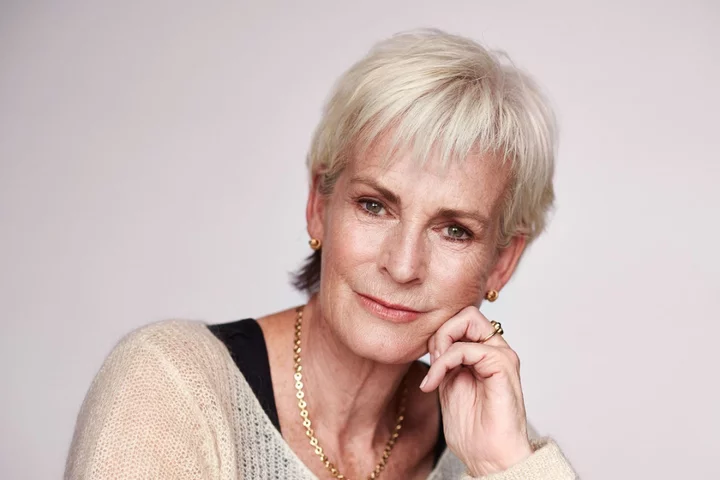
Judy Murray: More needs to be done to protect athletes from abuses of power
More needs to be done to protect sportswomen from the abuse of power from coaches and other key figures in their professional life, Judy Murray has said. While the tennis coach, and mother of Wimbledon stars Andy and Jamie Murray, welcomed measures taken within the Women’s Tennis Association (WTA) – which recently appointed a director of safeguarding in an increased effort to protect professional athletes from predatory coaches – she said further action is needed in the industry as a whole. “I think it’s up to all of the individual governing bodies to have someone in that head of safeguarding role that, whether you’re a coach, a parent, a player or in sports science, when you see something or if something happens to you, you know that that’s the group you go to, that’s the person you speak to, it will be treated in confidence but there will be action taken from it,” Murray told PA Media. “I think we’ve all seen a lot of brushing under the carpet over the years. And often you don’t know who to go to, and even if you do go to someone, you’re concerned: ‘Is it going to affect my selection for the team or my funding?’” The former Scottish No 1 player and long-time coach, 63, was speaking while promoting her debut novel, The Wild Card. The book centres on a fictional professional tennis player, who is manipulated by her coach during her earlier career as a 17-year-old into a sexual relationship, fearing that he will ditch her if she doesn’t comply. “For me, having been round the women’s tour, it’s a very male-dominated domain in terms of the coaches and you realise that the young players in particular, they’re travelling all the time, they’re away from home, the coach becomes a crutch, not just a coach. You actually assume a parent role, a friend role,” Murray added. “It’s very easy for players to become dependent on coaches, and fall into something that they don’t really understand and feel they can’t get out of.” She said she welcomed the wider awareness created by athletes who have come forward about their own experiences, citing the case of multiple Olympic gold medal-winning US gymnast Simone Biles, one of many women sexually abused by former team doctor Larry Nassar (who was subsequently jailed for 40-plus years). “Over the last few years, we’ve seen examples in several sports of players/performers telling about what’s happened to them in terms of abuse of trust and abuse of power, none more so than Simone Biles and other gymnasts with the US doctor, which went on for years,” said Murray. “It [the US gymnasts’ case] encouraged more people to speak out, and highlights the need for ensuring that those in positions of power within sport are suitably qualified, vetted and insured, and also that somebody is accountable to somebody else. “It makes such a big impact when top athletes like Simone Biles speak out about what’s happened to them,” Murray continued. “And it gives confidence to others to come out and talk and to share, and it is about raising awareness. “But at the end of the day, you can raise awareness, but you need somebody to act on that. And that is starting to happen, but it’s probably still in its relative infancy.” The Wild Card by Judy Murray is published by Orion, priced £14.99. Available now. Read More Charity boss speaks out over ‘traumatic’ encounter with royal aide Ukraine war’s heaviest fight rages in east - follow live Nearly half UK adults believe LGBTQ+ representation important in storytelling – study What to wear to Glastonbury this year 11 ways to work white into your interiors
2023-06-09 14:45
